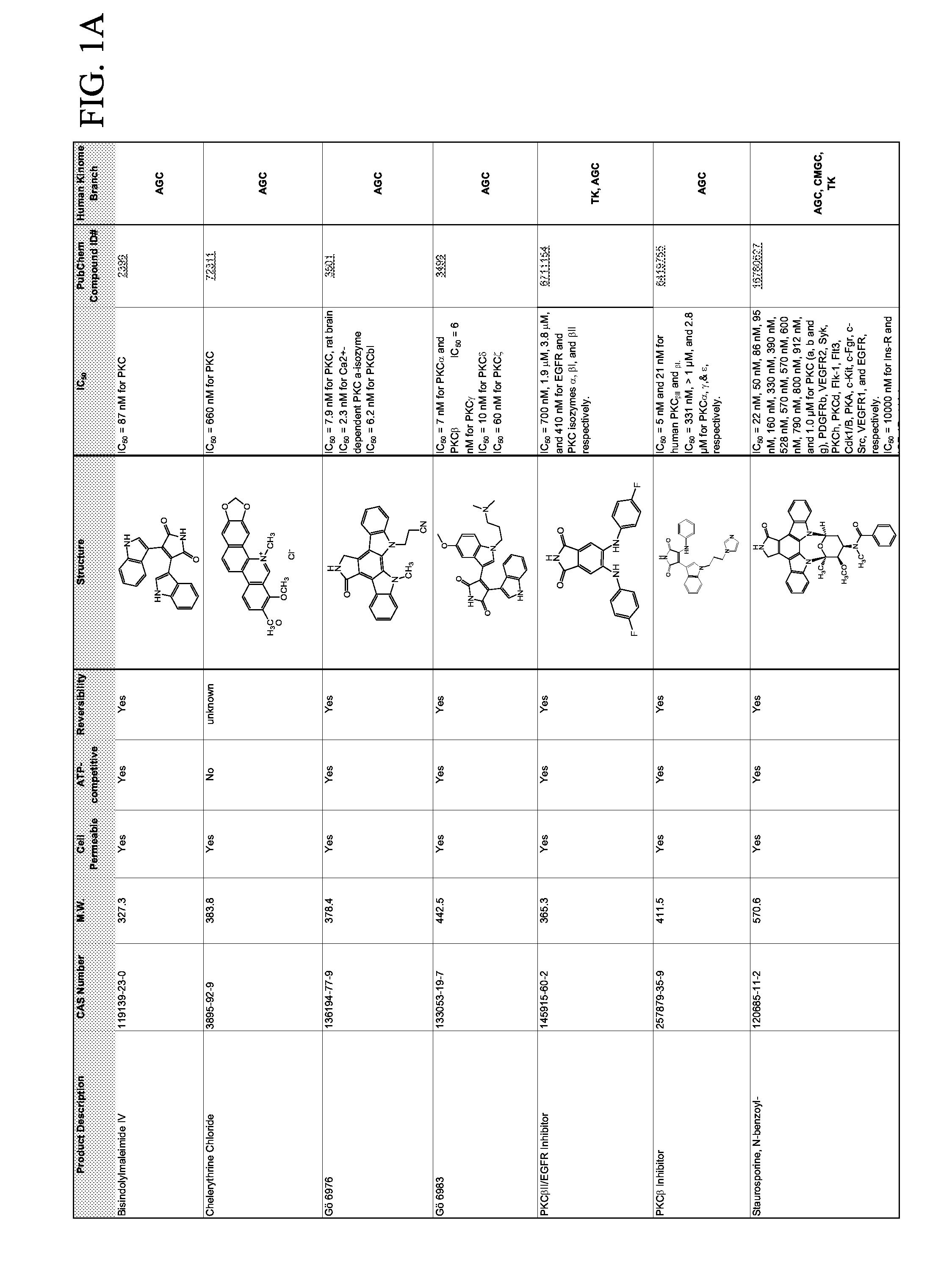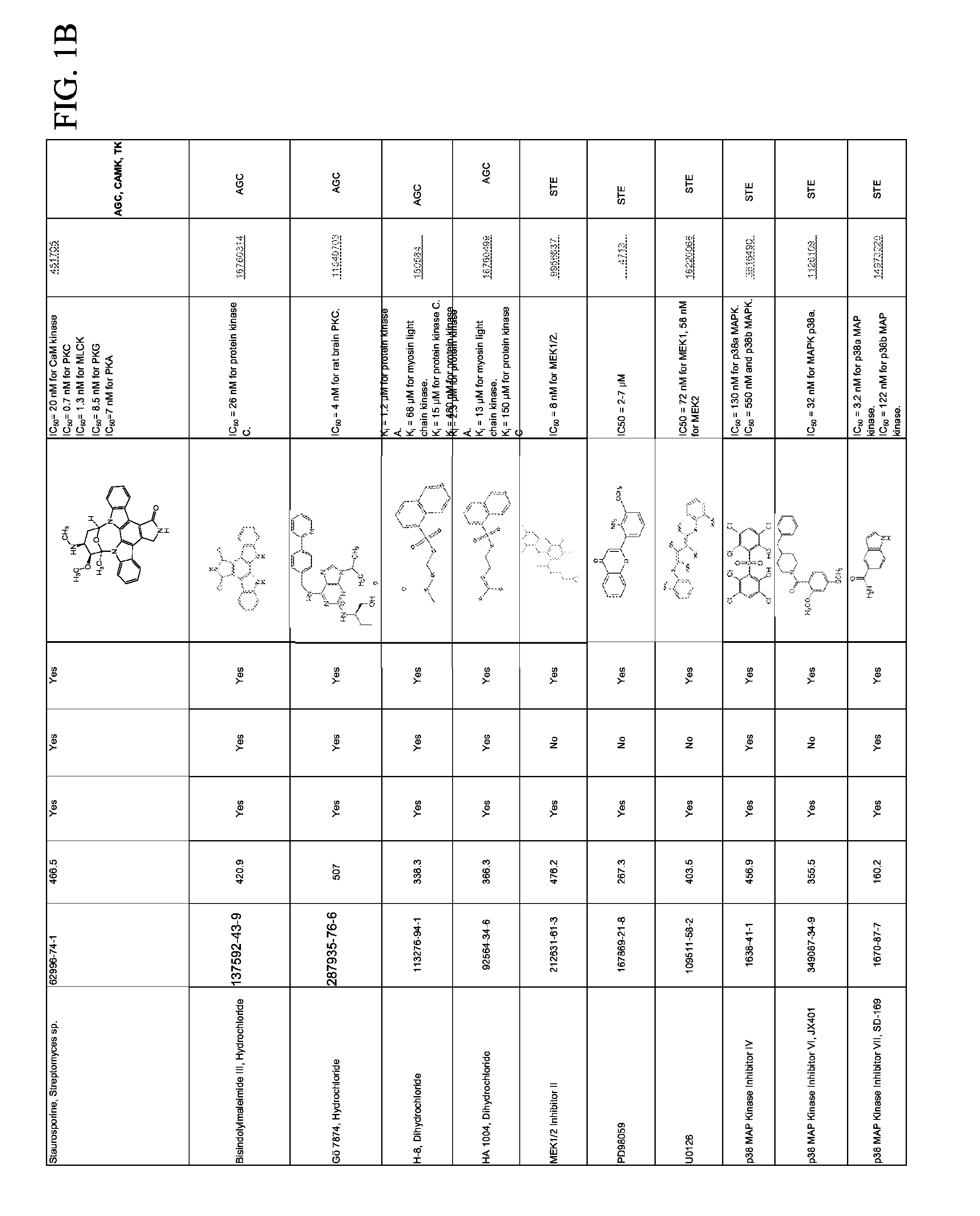Therapies for diseases caused by arthropod-borne parasites
a technology of arthropods and parasites, applied in the field of treating or preventing diseases caused by arthropods, can solve the problems of increased risk of sudden death, heart failure, and/or gastrointestinal disturbance, severe inflammation of the heart or brain, and parasitemia levels that are undetectable by microscopy, etc., to and reduce the transmission of trypanosoma cruzi
- Summary
- Abstract
- Description
- Claims
- Application Information
AI Technical Summary
Benefits of technology
Problems solved by technology
Method used
Image
Examples
example 1
Screening Compounds for Effects on Cell Viability, Proliferation and Kinase Activity in Mosquito Cells In Vitro and In Vivo
[0068]Testing with immortalized Anopheles cells. Multiple cell lines created from minced mosquito embryos or larvae are available from Anopheles stephensi (ASE, MSQ43) and from Anopheles gambiae (4a3B, SUA). These cells are not derived from specific tissues, but rather were selected because they grew continuously under culture conditions after isolation. In general, these cells are phagocyte-like and immune-responsive, but cellular physiology is more muscle cell-like (Giulivi et al., Biochem J, 415:309-16, 2008). Small molecule inhibitors (SMIs) are analyzed using these cells first to establish concentration ranges that inhibit target protein kinases without toxic effects on mosquito cells.
[0069]Cell death assay. SMIs are diluted over a log-range for toxicity analyses. Assays against mosquito cells are performed in 96 well plates using CytoTox 96® Non-Radioactiv...
example 2
Screening Compounds for Effects on Plasmodium Growth, Infectivity and Development in Erythrocytes, Mice and Mosquito Cells
[0073]Plasmodium growth and mammalian infection assays. In order to attribute SMI activity to effects on mosquito signaling proteins specifically, SMIs are routinely screened for growth effects on P. falciparum parasites maintained in human erythrocyte culture in vitro. Because parasites are ingested by mosquitoes in the formed of infected erythrocytes, testing SMIs against parasite-infected erythrocytes in vitro provides insight as to whether an SMI of interest affects only the mosquito host or affects both the mosquito host and malaria parasite biology. While SMI effects on the mosquito can all be beneficial in terms of transmission reduction, beneficial effects of SMIs for the malaria patient would necessarily depend on the demonstration of an effect of the SMI on parasite growth in erythrocytes.
[0074]P. falciparum growth assay. Aliquots of ring stage P. falci...
example 3
Administration of Kinase Inhibitor(s) to Human Patients to Treat Malaria
[0080]This example provides a description of a clinical study among malaria-infected individuals. The clinical and parasitological response (CPR) in test subjects receiving treatment with candidate kinase inhibitor(s) (test formulation) is compared to the CPR of control subjects receiving treatment with a control formulation (placebo or comparator).
[0081]Primary Objective: to compare the proportions of test and control subjects that are free of parasites in the blood at Day 28 post-treatment.
[0082]Secondary Objective(s): to compare the proportions of test and control subjects free of parasites in the blood at Day 7 post-treatment; to compare the time of clearance of fever in test and control subjects; and to compare the time to clearance of parasites in the blood in test and control subjects.
[0083]Tertiary Objective(s); compare the responses to treatment of test and control subjects according to the World Health...
PUM
| Property | Measurement | Unit |
|---|---|---|
| molecular weight | aaaaa | aaaaa |
| molecular weight | aaaaa | aaaaa |
| molecular weight | aaaaa | aaaaa |
Abstract
Description
Claims
Application Information
 Login to View More
Login to View More - R&D
- Intellectual Property
- Life Sciences
- Materials
- Tech Scout
- Unparalleled Data Quality
- Higher Quality Content
- 60% Fewer Hallucinations
Browse by: Latest US Patents, China's latest patents, Technical Efficacy Thesaurus, Application Domain, Technology Topic, Popular Technical Reports.
© 2025 PatSnap. All rights reserved.Legal|Privacy policy|Modern Slavery Act Transparency Statement|Sitemap|About US| Contact US: help@patsnap.com



